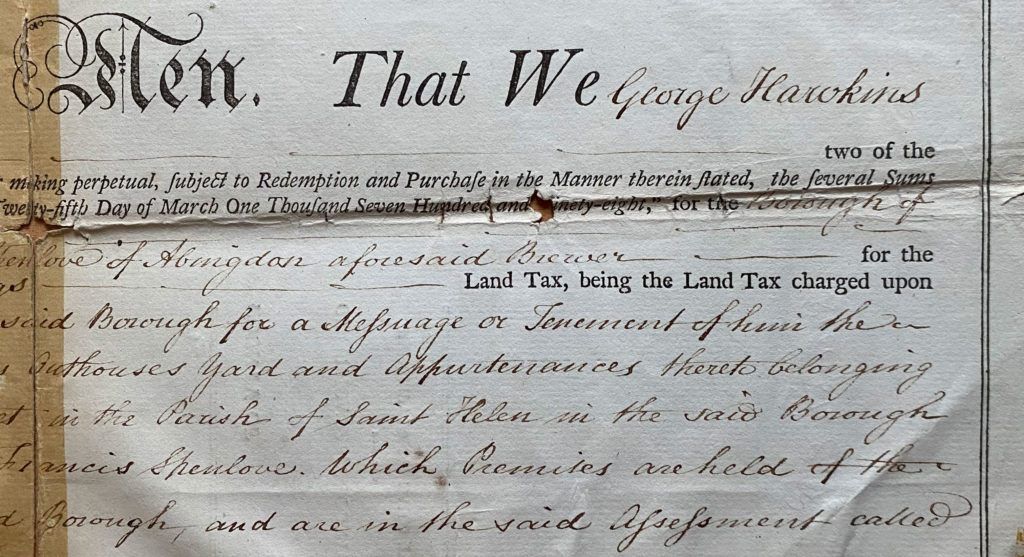Spending time in our lovely garden has become an essential part of many people’s daily routine. Yet it was not always this serene.
Until the 19th Century you would have stepped straight out the main house into a bustling yard, with horses, carts, bails of barley and hops. The River Thames played a vital role in all this and, indeed, the yard was originally much bigger than today’s garden, so that barges could be loaded and unloaded.
There were outhouses, too, and it was in those where the beer was brewed. Together with the main house, all this paraphernalia was called a messuage. How do we know?
It is a term that is used in a 1798 document, a contract, that has come to light. A messuage is a dwelling house with outbuildings and land assigned to its use.
The story of the contract will be revealed in the next article by Ianto Brewer, a sixth form history student from Abingdon School who worked with us for a week in July 2021 carefully transcribing the old English document. It is a tale, once again, of how international events eventually affect people everywhere.
In the 1930s there was a garden, possibly much like it is today. According to an Estate Agent’s leaflet from that period, it had a ‘secluded Old World charm’. There were paths, rose beds, box bordered flower beds, espalier and wall fruit trees, a heated greenhouse, summer house and ‘delightful’ access to the river for bathing. Viscount and Lady Chetwynd lived at the house. Apart from anything else, they were both motor sports enthusiasts.
Sometime after 1875 a brick wall, as we see it today, was built on the west side of the yard. Perhaps that was when the yard, or part of it, was planted out as a garden.
What we do know for sure is that the front part of the yard (today’s gravelled area) was being used to manage loads of the new wonder, coal, that was used to heat fine homes and helped power small engines in the area.
For that side of the story, we will publish an article from Oskar Muller, another history student from Abingdon School. He investigated the ‘coal era’ at St Ethelwold House or 30 East Saint Helens Street as it would have then been known. Oskar investigated where the coal came from, how it was transported and, perhaps, who were the customers.
Meineke Cox, an earlier historian, writing in 2003, states that “by 1823 the house had become the home and business practice of Thomas Pemberton, a coal merchant, whose son William purchased it from the Borough of Abingdon for £790 in 1883. He had become the first owner since the Middle Ages”. William Pemberton was also Mayor of Abingdon.
The Pemberton family had standards. To avoid walking straight out into the yard it appears that Thomas Pemberton had a hallway built which interconnects the front, Georgian style house with its Medieval tail where the servants and staff worked.
There were also iron railings at the front, long gone, and if you look carefully at the Flemish brickwork, it is evident that the windows were enlarged in Victorian times. This added grandeur and was made possible because of the new methods used to make glass.
Want to know more?
The history of St. Ethelwold’s extends over 800 years, the house benefitting from its dry land, the proximity to the River Thames, and its position in East Saint Helen Street and in Abingdon-on-Thames which was once the county town of Berkshire. Learn more by downloading a short history of No.30 East St Helen Street (pdf).

